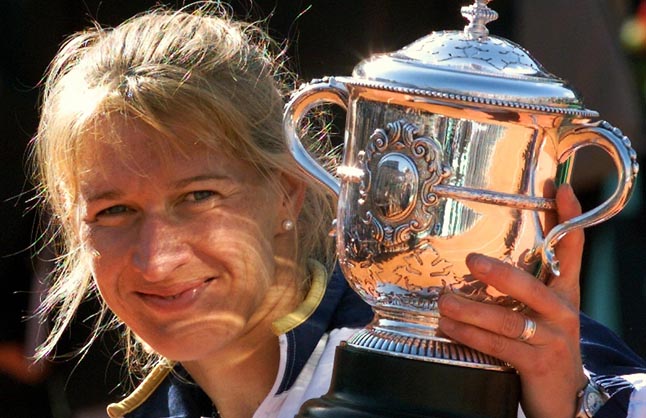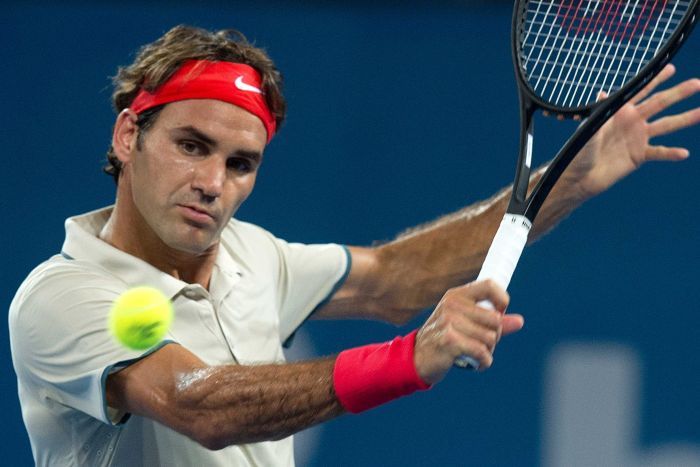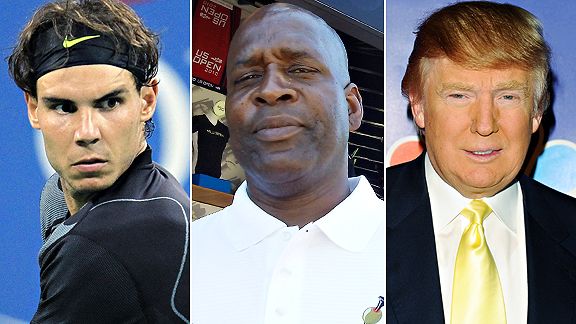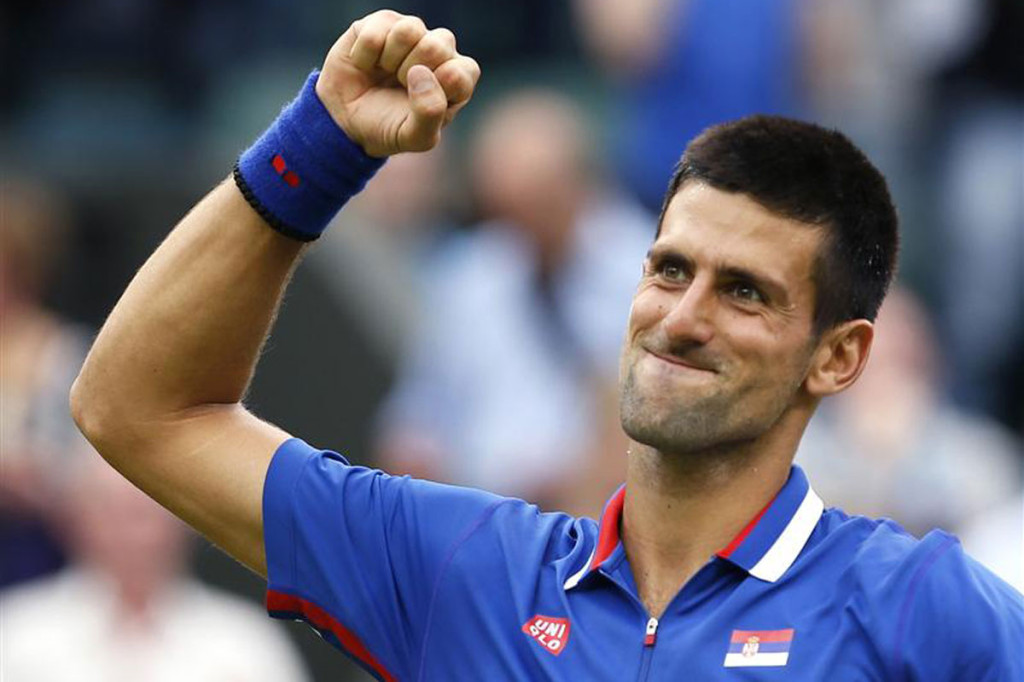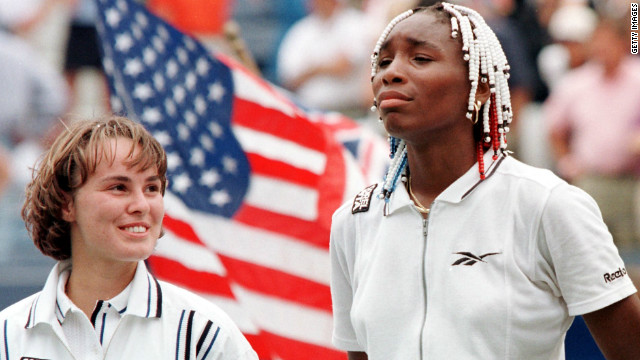Being a fan of professional tennis isn’t just about watching matches or keeping up with the results. We also enjoy reading literature about the sport — whether it focuses on players, the evolution of the game or the way it relates to the rest of our world. Below are a few of the best articles ever written about tennis that as a fan, you should reread, or if you haven’t already, read for the first time. Some of the greatest sports journalists of the era tackle a wide range of topics from the complex race and gender issues in tennis to the lighthearted experiences of a beloved bodyguard.
“How Do You Measure Greatness While Thinking About Basic Freedom?” by Jeff MacGregor, September 2009
Synopsis: MacGregor questions gender equality in the sports world through the space in which journalists write about male and female athletes. Writing on the eve of the 2009 U.S. Open, MacGregor asks why it is that he and so many others have defined Federer as the greatest player of all time, when Steffi Graf still outpaces him in Grand Slam titles. Yet his own ability to examine gender inequality, through tennis and otherwise, is overshadowed by a reminder to readers concerning the danger fellow journalists around the world face when criticizing the relationship between men and women.
Best excerpt: “So there’s a lot to see and hear and feel and consider in the Flushing fortnight. And it delivers one of the most important things sports does for us all: It allows us the opportunity to write and talk and think about deeper human truths without scaring ourselves sick. This is not true everywhere, however.”
“Federer as Religious Experience” by David Foster Wallace, August 2006
Synopsis: You would expect an article written by someone who has also penned one of the greatest books of the last 100 years to be close to flawless. So it comes as no surprise that David Foster Wallace’s essay is just that. Wallace states from the beginning of the piece that he isn’t writing a profile on Federer, noting that when it comes to the media’s coverage of one of the greatest players of all time, nothing remains to be said. Instead, Wallace chooses to probe the viewer’s experience in watching the Swiss, drawing upon his own observations at Wimbledon in 2006. When describing Federer’s technique for every shot, Wallace concludes none of it explains why watching him is an otherworldly experience. Although he gives a technical explanation of Federer’s greatness because it “makes for better journalism,” for Wallace, Federer’s truth is metaphysical.
Best excerpt: “The specific thesis here is that if you’ve never seen the young man play live, and then do, in person, on the sacred grass of Wimbledon, through the literally withering heat and then wind and rain of the ’06 fortnight, then you are apt to have what one of the tournament’s press bus drivers describes as a “bloody near-religious experience.””
“Best Seat in the House” by Rick Reilly, September 2010
Synopsis: Reilly interviews Donald Trump’s bodyguard James Rickenbacker who spent two weeks every year from 1995 to 2009 guarding tennis players at the U.S. Open. Rickenbacker gives the inside scoop on Pete Sampras, Lindsay Davenport, the Williams sisters, Rafa, Djokovic and his favorites: Andre Agassi and Steffi Graf, whom he calls “the best people.” (Agassi wrote about Rickenbacker in his 2010 autobiography, Open). Though Reilly has been accused of both self indulgence and plagiarizing himself, he let’s Rickenbacker simply reminisce uninhibited.
Best excerpt: “He was a kind of human canvas against which great Open matches were played, standing there behind dark sunglasses, motionless, waiting on trouble.”
“Freak of Nurture” by Eli Saslow, July 2012
Synopsis: Saslow examines what it takes for an athlete to rise to the top among competition that’s already at its strongest, especially in the revolutionizing sport of men’s tennis. The author picks Djokovic as his case study — a detailed-oriented machine when it comes to his diet, training and practice. In particular, Saslow talks about the no. 1 player’s spiritual and nutritional regimen, the latter of which Djokovic wrote about in his 2013 book, Serve to Win. Despite Djokovic’s loss to Nadal in the finals of the French Open at the time the article was written, Saslow contends that for tennis’ fittest athlete, giving up isn’t an option.
Best excerpt: “As Nadal ran into the stands to celebrate with his family, Djokovic sat alone on the court, his eyes on Nadal, as if collecting motivation for the months ahead. “Everything in life is a lesson,” he later said.”
“Venus Opens Up About Race, 13 Years After Crashing U.S. Open” by S.L. Price, September 2010
Synopsis: Price explores Venus’ attitude toward the racial issues she faced as a young African-American player on the tour and how her response to those issues has changed over time. Starting from Venus’ U.S. Open debut in 1997, Price writes about everything from father Richard Williams’ controversial commentary on race in tennis, to a 2009 incident in which Venus spoke out against the U.A.E. government when it barred an Israeli player from competing in a tournament there. “Just because of my history, too, as the African-American,” she said of why she spoke out. From moments when Venus allowed her feelings on racial injustices to surface to times when she shied away from the topic, Price explains why he thinks Venus is finally ready to talk about her impact beyond tennis.
Best excerpt: “Because a key part of the excitement about Venus from the start was this: That she could, like Arthur Ashe, be the start of something new for an oft-hidebound, elitist and monochromatic sport, a bridge into the game for the poor and minorities, someone who would stand up for those who are being held back.”
